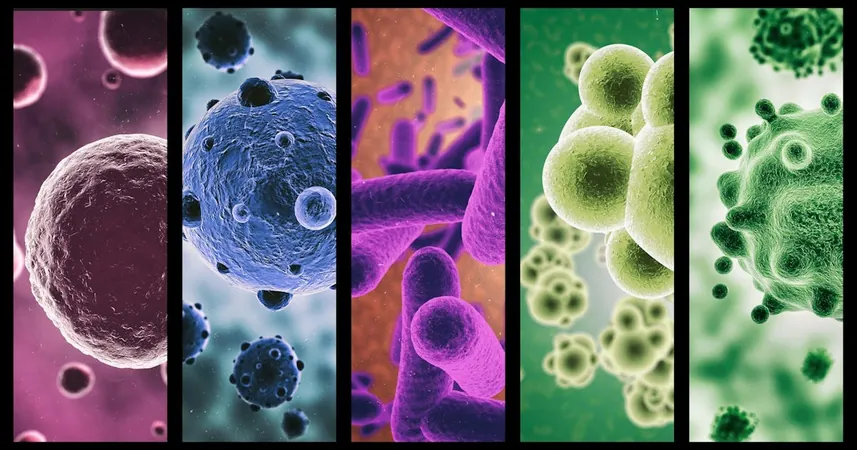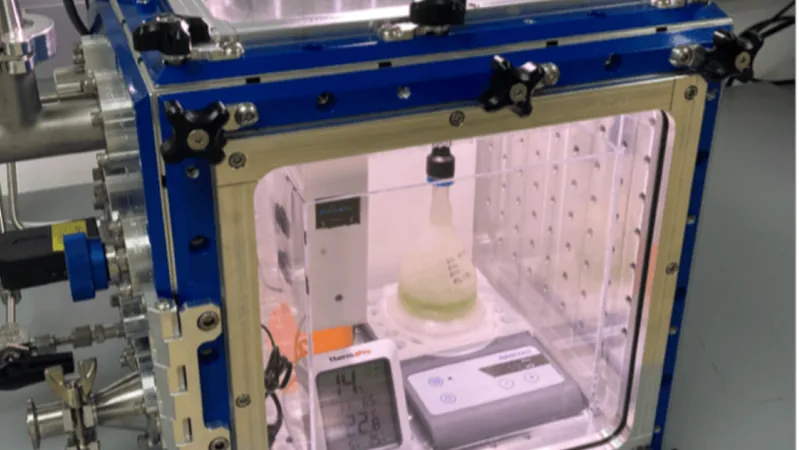
Unlocking the Future: How Microbial Metabolism Could Revolutionize Fuels, Space Travel, and Medicine
2025-01-11
Author: Li
In an era where climate change looms large and aspirations to colonize other planets become tangible, scientists are turning to the microscopic world for innovative solutions. Researchers are leveraging advanced simulations of microbial metabolism to tackle some of humanity’s most pressing challenges.
By harnessing the powers of computational biology, scientists are developing ways for microbes to generate essential chemicals—ranging from biofuels to bioplastics—that can significantly impact several industries, including energy, agriculture, and healthcare. Traditionally, this process required countless tedious experiments on Petri dishes, but now, with digital blueprints known as genome-scale metabolic models (GEMs), the landscape of research is changing dramatically.
What Are Genome-Scale Metabolic Models?
GEMs act as digital representations of the myriad chemical reactions within a cell, illuminating how organisms metabolize nutrients, generate energy, and detoxify harmful substances. By scrutinizing an organism’s genome—its genetic blueprint—scientists can identify proteins called enzymes that facilitate essential metabolic processes. These models interconnect genes, reactions, and metabolites, providing a comprehensive overview of cellular function.
Once a GEM is constructed, researchers utilize sophisticated computational simulations, such as flux balance analysis, to replicate how live microbes operate. This approach allows scientists to predict cellular responses to genetic changes and environmental stressors, helping them understand how organisms can adapt and thrive.
A Sustainable Solution to Energy and Climate Challenges
The reliance on fossil fuels has raised alarms worldwide due to their finite nature and their role in climate change. Enter researchers at the Great Lakes Bioenergy Research Center at the University of Wisconsin-Madison, who are focused on transforming plant waste—such as cornstalks and algae—into sustainable biofuels. This research strives to minimize environmental impact while providing alternative energy resources.
Currently, one exciting avenue involves the bacterium Novosphingobium aromaticivorans, which has the unique capability of breaking down complex organic waste into valuable products. By further refining GEMs, researchers aim to enhance the efficiency of this conversion process, making biofuels not only a greener choice but also more economically viable.
Extreme Microbes and the Prospects of Space Colonization
Mother Nature, it seems, is the ultimate survivalist. Certain extremophiles—organisms thriving in extreme conditions—might hold the key to understanding how life could adapt on other planets. For instance, the bacterium Chromohalobacter canadensis can survive in high-salinity environments, while Alicyclobacillus tolerans flourishes in acidic settings. These remarkable adaptations raise the tantalizing possibility of using these microbes in future extraterrestrial colonies.
GEMs can simulate the conditions found on other planets, allowing researchers to explore how these microbes could not only survive but also thrive and potentially alter inhospitable environments to make them suitable for human habitation.
The Future Potential of GEM Technology
As research continues to advance, GEMs are becoming indispensable tools in various fields. From biomanufacturing new materials and pharmaceuticals to constructing a holistic metabolic map for complex diseases, such as diabetes and obesity, the implications are profound. Synthetic biologists might even design novel organisms with tailored metabolic pathways that could meet specific human needs.
The dynamic landscape of computational biology and GEM technology promises to reshape our understanding and manipulation of life at the microscopic level. As we turn our gaze towards the stars and confront environmental crises, these advancements may not only redefine how we generate energy but also potentially open up new frontiers for human exploration and survival.
In short, the microscopic world might just hold the key to a sustainable, prosperous future for humanity—one microbe at a time. Are we on the verge of an unprecedented revolution in science and technology? Stay tuned, as the answers might be closer than we think!



 Brasil (PT)
Brasil (PT)
 Canada (EN)
Canada (EN)
 Chile (ES)
Chile (ES)
 Česko (CS)
Česko (CS)
 대한민국 (KO)
대한민국 (KO)
 España (ES)
España (ES)
 France (FR)
France (FR)
 Hong Kong (EN)
Hong Kong (EN)
 Italia (IT)
Italia (IT)
 日本 (JA)
日本 (JA)
 Magyarország (HU)
Magyarország (HU)
 Norge (NO)
Norge (NO)
 Polska (PL)
Polska (PL)
 Schweiz (DE)
Schweiz (DE)
 Singapore (EN)
Singapore (EN)
 Sverige (SV)
Sverige (SV)
 Suomi (FI)
Suomi (FI)
 Türkiye (TR)
Türkiye (TR)
 الإمارات العربية المتحدة (AR)
الإمارات العربية المتحدة (AR)